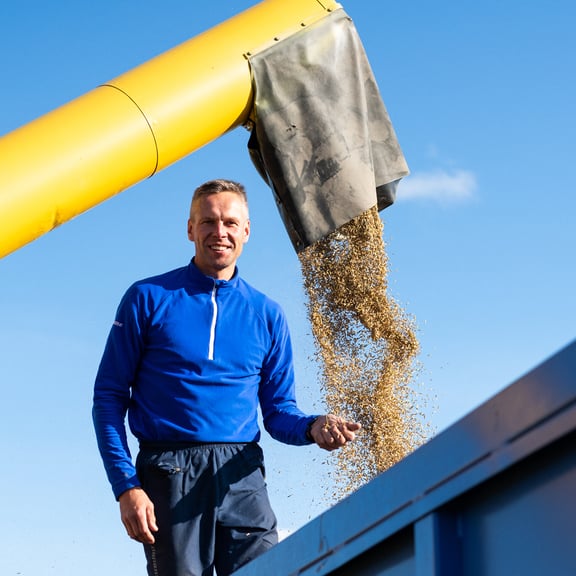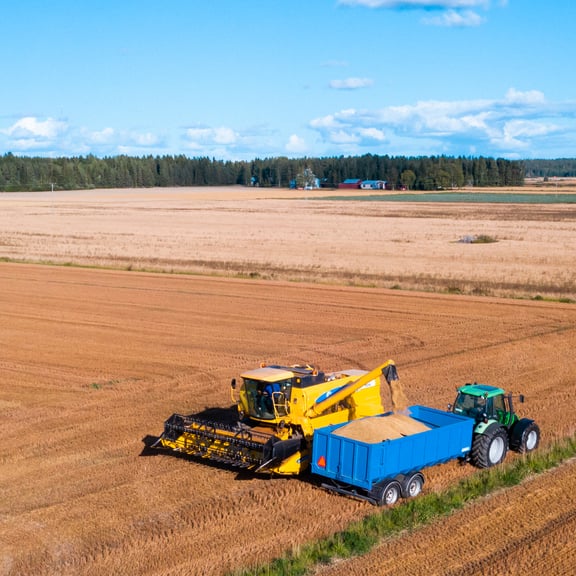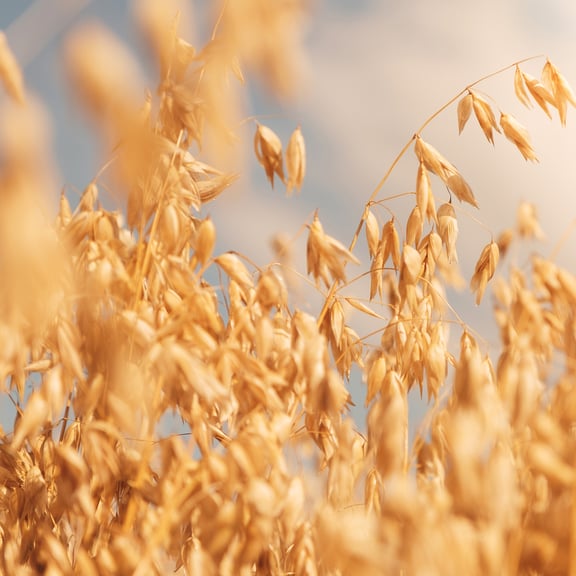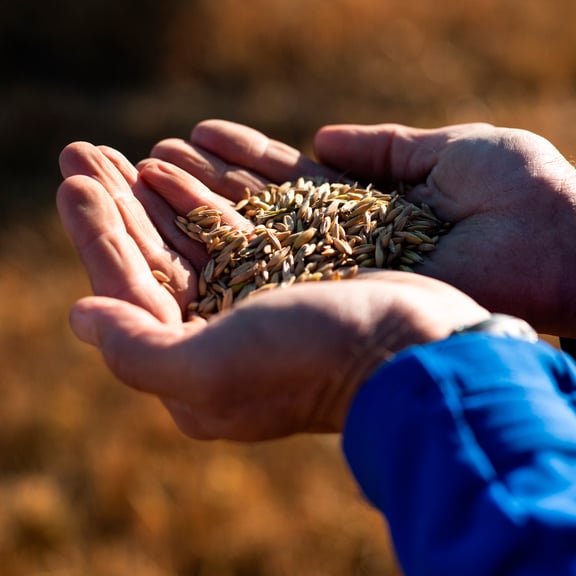How does a farmer know when it is time for threshing?
“Every cultivated crop species has a theoretical growth period in days, which is based on heat accumulation during the growth period. It is of course only a theory, and this year showed once again that there is no clear answer to the question,” explains Mikko. In practice, farmers estimate the ripeness of crops by feel and eye. “Once the grains and stem have turned light yellow, and the moisture content of the grain is below 20 per cent, it is time to thresh,” says Mikko, and adds: “Sometimes the crop stem is still green, but the grain has already ripened. This is usually a sign that the soil has more energy than the crop can make use of.”
At Hölsö farm, threshing began on 2 September and ended on 25 September. Threshing lasted a total of three weeks. There are not many hours in the day for efficient threshing. “Efficient working time for threshing shortens considerably the further along you are in the threshing process, as in the morning you need to wait for dew to evaporate, and in the evening, the moisture sets in mainly when the sun goes down.”
The journey of oat grains from field to mill requires precision work and is subject to many regulations
Threshing is carried out using a New Holland TC combine harvester equipped with a 17-foot cutter bar. The combine harvester must always be adjusted for the crops before threshing begins. The combine harvester is also serviced and some bearings are greased every 10 hours while others are greased every 50 hours. First the combine harvester’s threshing drum and concave clearance are adjusted, as well as the speed at which the threshing drum rotates. When the crop moves between the threshing drum and the concave, the grain is separated from the chaff.
Next, the speed of the fan is adjusted. The fan’s task is to separate the grains from the chaff using sieves. The sieves are the last to be adjusted and their adjustments are checked in the field if necessary, as their adjustments are affected by the moisture, weight, and size of the grain, among other things.
The threshed grain is emptied into a tractor trailer, of which two were used – each with a volume of 230 hectolitres. From the field, the grain is taken to the dryer, which is a 350-hectolitre Arska manufactured in 2012. In the dryer, the grain is dried until its moisture level is around 12-13%, as the mill has set a maximum moisture limit of 14 per cent. After drying, the grain is moved to the metal storage silos inside the dryer.



